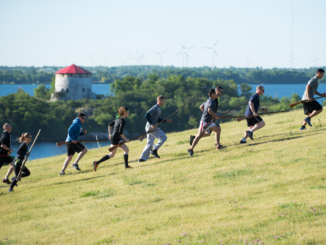
The activity of rucking has a very broad spectrum of interpretations, but the general principle is covering a medium to long distance carrying a significant load in a pack moving at a moderate pace above a gentle walk. Rucking is undoubtedly very evident within military culture as result of its operational importance and application but also has a great deal of competitive applications, seen in events such as Iron Warrior, Mountain Man and the Lanyard competition.
Though rucking is a relatively simple activity, load up and go long, the task of training to ruck is also very challenging because it involves a number of different factors and as result can be difficult to train for. The primary trainable challenges are having the physical capability to carry the load for long durations and moving at a fast enough pace.
The other key challenge that does exist in regards to rucking is the length of most of the competitive activities; these activities are usually long in duration, with distances of 20-60 kilometres often in play. These long distances provide a further training challenge as performing this high of a volume of distance on a regular basis within a training program can be very challenging to implement as well as possibly causing physical detriments, such as overuse injuries.
Utilizing a dual-factor approach can allow for an individual to use a progressive overload approach of opposing qualities while reducing the necessary frequency of the long duration sessions. The two qualities that would be overloaded in the dual factory approach would be the moving pace/speed, moving at a faster than normal pace with a slightly under loaded pack, and the training load, moving at slight slower than normal pace but with a heavier than normal pack weight. The distance volume of both of these different session types could be more moderate, 10-15 kilometres or 60-90 minutes in duration. Both of these factors, pace and pack load, would continue to be progressively increased or improved, with faster paces and heavier pack loads, at a gradual rate with marginal weekly increases.
Longer duration rucks, with paces, pack loads, and distances similar to competitive levels, could be utilized at a lower frequency of once every 6-8 weeks to help both with the physiological and mental preparation for the event demands as well as to act as a barometer of the effectiveness of the training and any additional factors that may need to be addressed or adjusted in training.
This dual factor approach of progressively overloading pace and pack load is an effective means of training for a long duration ruck competition or event without placing the body under the significant stress of frequent long duration/distance rucking sessions.
Article by: James Orsatti, Fitness and Sports Instructor



